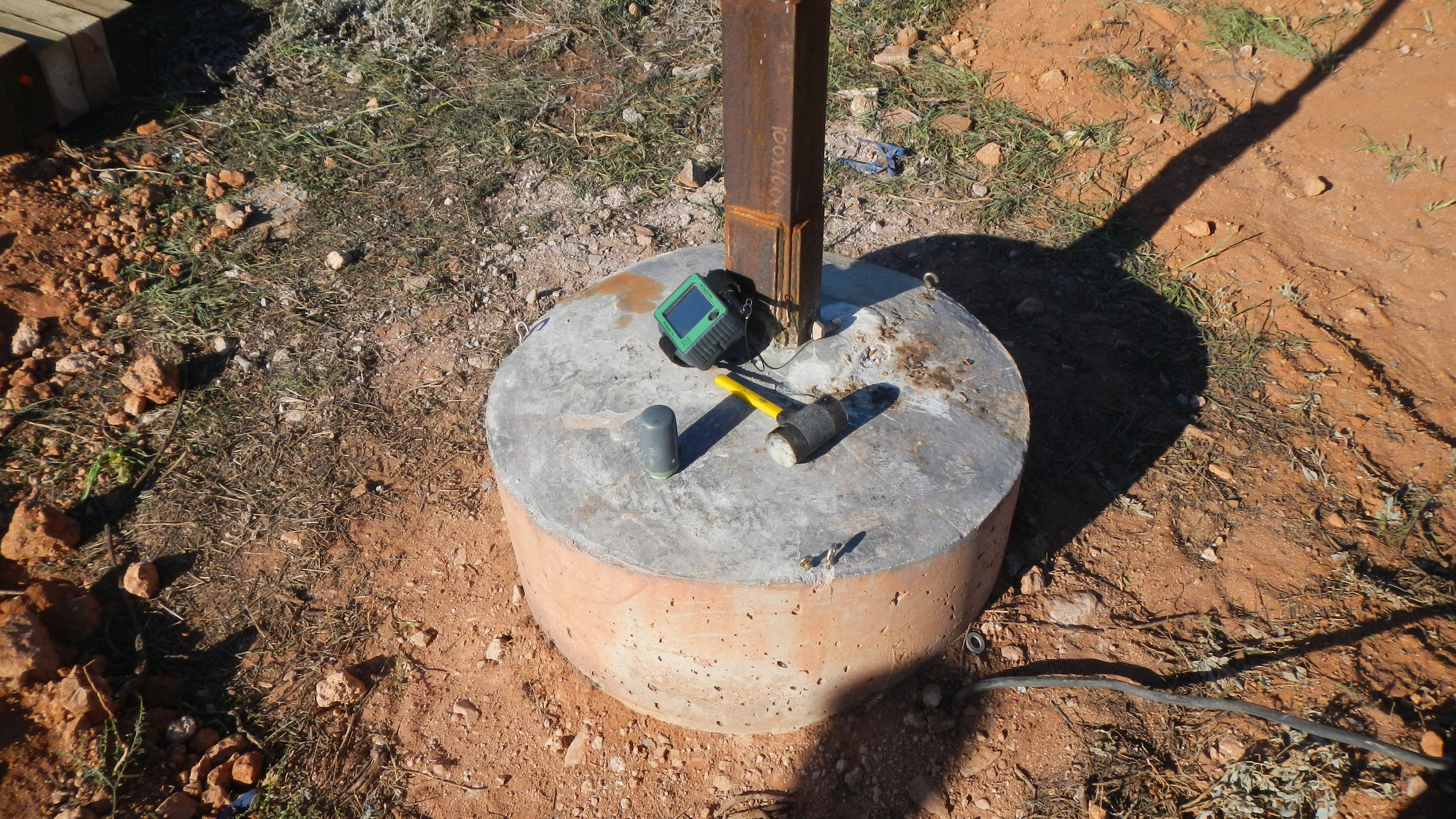Pile Dynamic Analyzer (PDA)
The Pile Driving Analyzer (PDA) from Pile Dynamics is a very useful tool for estimating the geotechnical capacity and performance of driven and cast-in-place piles.
The test involves attaching accelerometer and strain transducers to the side of the test pile and impacting the top of the pile using a pile driving hammer or drop weight with sufficient energy. The response from the sensors on the pile is recorded by the PDA and analysed later in the office with CAPWAP (CAse Pile Wave Analysis Program).
PDA testing can provide estimated pile capacity (shaft and toe resistance separated), compression stresses induced at top and bottom, tension stresses induced along the shaft, energy transferred to the pile, distribution of resistance along the shaft, and pile integrity.
Pile Integrity Tester (PIT)
The Pile Integrity Tester (PIT) users the Sonic Echo or Pulse Echo method to conduct low strain pile integrity testing. PIT is a non-destructive testing method used on concrete piles to detect potential defects such as cracks, necking, soil inclusions and voids.
A wireless accelerometer is attached to the top of the prepared pile and impacted with a small hand-held hammer. The accelerometer monitors the impact and resulting reflections of the compression wave travelling through the pile. The results are evaluated in the field and later in the office using PIT-W software.
In some situations, the PIT can determine unknown lengths of piles. PIT does not require advance planning and it is an affordable option when the pile integrity testing is specified or pile integrity is in doubt.
Alternative integrity testing
Alternative pile integrity testing methods include Crosshole Sonic Logging (CSL) and Thermal Integrity Profiling (TIP).
Static pile testing
Static pile tests are conducted to test a pile against compression, tension or lateral loads. Calibrated electronic load cells and displacement sensors are used with purposed built loading frames, reference beams and hydraulic rams.




